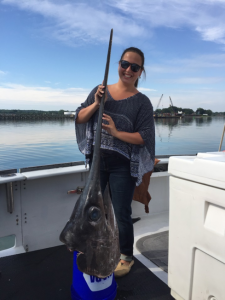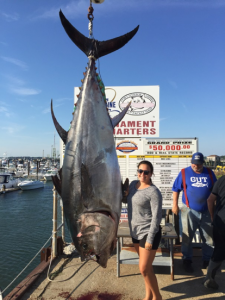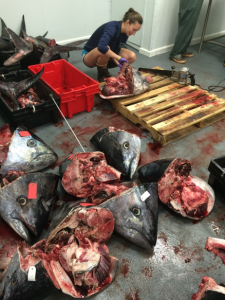The Migrators Are Here
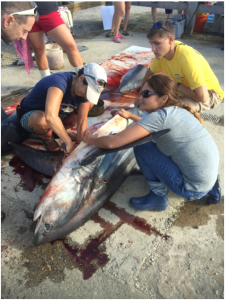
Dr. Walt Golet
Summer 2017
Despite a spring which brought with it mostly wet and cooler than average temperatures, the Gulf of Maine has already begun its transition to summer. The spring phytoplankton bloom, stratification of the surface layer, and the arrival of several different migratory species of pelagic fish has begun. These migratory fish exploit the cool, nutrient rich waters of the Gulf of Maine to increase fat stores which will be utilized for their reproductive and migratory requirements throughout the year. While many of these pelagic fish reside throughout the tropical to temperate regions of the Atlantic primarily in the northwest Atlantic, a select group (the highly migratory species) travels to the Gulf of Maine from all across the Atlantic Ocean. The tunas, billfish, and sharks display some of the most spectacular migrations of marine fishes and between May and November can be found right in our backyard. Atlantic Bluefin tuna, broadbill swordfish, and several species of sharks (white, thresher, short-fin mako, porbeagle, blue) all call the Gulf of Maine home for about half of the year.
The life history for most of these animals is largely unknown, in large part due to their pelagic nature and time spent away from the coasts. However, fostering collaborative relationships with industry and the use of new tools and techniques are allowing us to learn so much about these organisms. This in turn improves our ability to assess and manage their populations towards long-term sustainability. Dr. Walt Golet’s lab is conducting ongoing research into the life history of these fish, examining the age structure, foraging ecology, reproduction, movement/migration, energetics and post-release mortality for several of these highly migratory species.
Atlantic bluefin tuna, for example, are a species that utilize most of the north Atlantic basin, but is currently
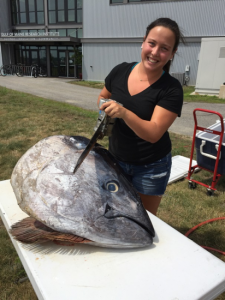
managed and assessed as two stocks based on the assumption that mixing from one side of the Atlantic to the other is limited. One stock resides in the eastern Atlantic, the other in the west, separated by the 45W line. To assess the stock properly, we need to collect basic life history information. So for six months each summer my staff and I collect biological tissues from these fish including muscle and sagittal otoliths. These collections come from commercial and recreational landings and registered
tournaments. Using otoliths which act as a biological recorder, we can establish age structure, counting the annuli and using otolith microchemisty, my colleague Dr. Lisa Kerr and I can estimate mixing rates (numbers of eastern and western fish in the landings). Using stable isotopes from muscle tissue we can evaluate foraging ecology and through the use of lipid analysis and bomb calorimetry we can track energetic status. The latter two can be used as ecosystem indicators for tracking energy flow through trophic levels. Pilot studies are currently underway to use genetic markers as tags to estimate absolute population size as well as other parameters like reproductive output.
